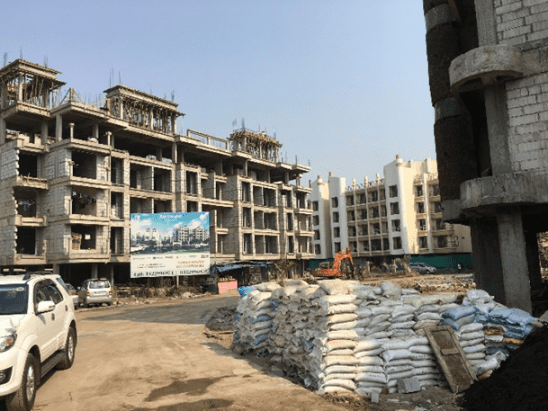There is a popular refrain in India that has been around more than 25 years: isn’t the infrastructure awful? When will they get the roads built? What about those ancient railways? Contrast is always made with their similarly populous neighbour across the Himalayas, which has always worked on a strategy of build it and they will come.
This lack of infrastructure has not, however, hindered equity returns. Indian equities have risen 8 fold since the end of 1992, when the current MSCI dollar-based, total return country index was introduced, a compound annual return of 9.2%. A similar investment in China has returned 2.0% per annum. This gap is now closing, arguably because the private sector, mostly consumer and services orientated businesses, is now driving growth in China and these businesses require a sensible return on their investment, unlike their State backed brethren.
China has two linked “advantages” when it comes to building things. First, the power of the Communist Party of China removes any trivial land ownership issues getting in the way of the bulldozers, and secondly the fact that the State, or its various instruments who tend to build these things, have historically required no meaningful return on their investment.
Of all the criticism levelled on PM Modi, unfairly in our view, there is no doubt in our eyes that whether through technology, anti-corruption measures, GST, or some good luck (lower oil prices), the fiscal situation is in better shape than it has been for a long time. So when faced with a crippled state banking sector (albeit now slightly less so after recent recapitalisation efforts) and an investment cycle which has failed so far to materialise, the government has stepped in. Central government capital expenditure is estimated to be up 30% so far this fiscal year to March 2018. Still not quite China-style, but progress nonetheless. But there is another reason to think this push might become self-fulfilling: housing.
A drive through Navi Mumbai, the vast former swamp across the water from the over-populated slither of land that is Mumbai proper, is very reminiscent of Shanghai’s Pudong district circa 1992: pockets of high rise development, interspersed with large areas of scrub and farmland. Just like Pudong, a vast new airport is coming, the elevated railway is making good progress, but more importantly vast areas of new housing are starting to appear.
Mr. Modi has built much of his popularity on his Housing for All policy. He cannot give everyone an apartment, like the Chinese government did in the late 1990’s, for two simple reasons. First, they are not yet built, and secondly, unlike the Chinese State at the time, he does not own them. What he can do is make it very, very affordable to buy one and this he has done through a raft of subsidies and tax incentives.

Navi Mumnai
A long, long way down a rutted dirt road, a bustling building site of affordable five storey apartments was being erected by one of Mumbai’s smaller developers. “Are you not worried about access?” we asked. No, the government will build a proper road soon enough. This may be the case, but for the larger projects the private sector must also re-engage, and for this to happen they must offer a decent return. Assuming housing construction takes off, then this will surely follow as the real demand for the infrastructure rises drives up returns.
In another corner of Navi Mumbai stands the 4,500 hectare Palava development being built by the private Lodha Group, already home to 100,000, but anticipated ultimately to house 1 million residents. Very middle class, and very presentable properties, this is a tough commute to Mumbai today, but come back in 5 years and it seems that the claimed “one hour to downtown Mumbai” might be feasible. Developing on this scale is very much Chinese style.
India is not like China. Democracy, and the need for real investment returns ensures it will never be. But another powerful investment cycle is coming, with housing at its core, and the infrastructure will inevitably follow. In the meantime, India’s private sector companies will continue both to seek high returns and produce them for their shareholders, and India’s outperformance should continue.
This document has been issued by Aubrey Capital Management Limited which is authorised and regulated in the UK by the Financial Conduct Authority and is registered as an Investment Adviser with the US Securities & Exchange Commission. You should be aware that the regulatory regime applicable in the UK may well be different in your home jurisdiction.
This document has been prepared solely for the intended recipient for information purposes and is not a solicitation, or an offer to buy or sell any security. The information on which the document is based has been obtained from sources that we believe to be reliable, and in good faith, but we have not independently verified such information and no representation or warranty, express or implied, is made as to their accuracy. All expressions of opinion are subject to change without notice. Any comments expressed in this presentation should not be taken as a recommendation or advice.
Please note that the prices of shares and the income from them can fall as well as rise and you may not get back the amount originally invested. This can be as a result of market movements and also of variations in the exchange rates between currencies. Past performance is not a guide to future returns and may not be repeated.
Aubrey Capital Management Limited accepts no liability or responsibility whatsoever for any consequential loss of any kind arising out of the use of this document or any part of its contents. This document does not in any way constitute investment advice or an offer or invitation to deal in securities. Recipients should always seek the advice of a qualified investment professional before making any investment decisions.
